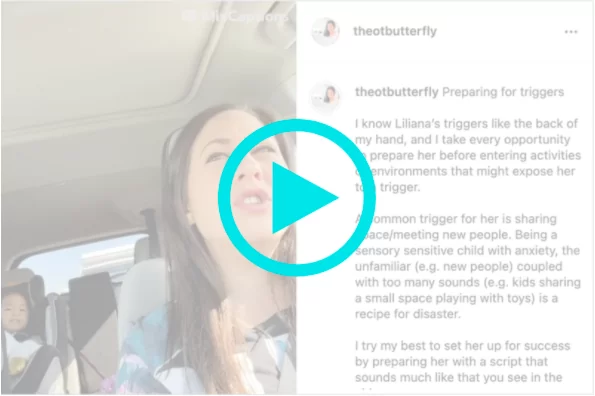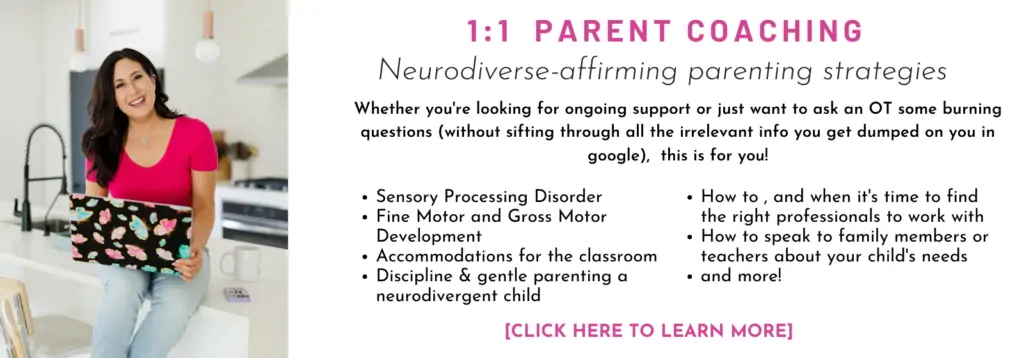Get your FREE sensory profiles cheat sheet >>click here<<
Talking to your child about their sensory triggers
If you have a child who has sensory sensitivities and is a sensory avoider, then you’re no stranger to their sensory triggers.
Sensory triggers are the events/stimuli/environments that repeatedly cause your child to become dysregulated or have meltdowns.
Dealing with a child with sensory triggers is tough enough on its own. It can get even more difficult when you have to explain to them why these things are happening to them, and what they can do about it. It’s critical that we work with our kids to help them better deal with these triggers.
Read on to learn more.
What are some example Sensory Triggers?
Some examples of sensory triggers might be related to specific sensory input, for example:
- Tactile triggers: wet play, messy hands, getting clothes wet, getting face or head wet, getting bumped into or touched unexpectedly
- Auditory triggers: unexpected sounds, too many background noises, loud sounds, singing, clapping, competing sounds (talking and music, or too many people)
- Visual triggers: too much clutter, bright colors
- Smell/Taste triggers: related to food pickiness
- Movement (vestibular) triggers: unstable surfaces, fast movements, spinning movements, motion sickness
*This is list is not ehxaustive.
Why should I talk to my child about their sensory triggers?
Talking about their triggers allows you to prepare them for upcoming scenarios that may make them feel uncomfortable. By mentally preparing them, you make them aware of what might happen and avoid them feeling caught off guard or scared.
It also allows you to talk about what they can do instead of hit/bite/scream/push (or any behavior that is associated with the trigger) before it happens. Talking with them about their sensory triggers provides valuable time to explain what other strategies they can implement to feel more comfortable, if and when those triggers come up.
How do I talk to my child about sensory triggers?
First you would name their sensory trigger, point out their observable behaviors in response to the sensory trigger, and offer them an alternative to try out.
For example, if you have a child who is sensitive to sounds and crowds of people, you could say:
“When we go to the park today, if there are too many sounds or people and you start feeling your heart beating fast, you can come find me and take a sip of water.”
1) Try using visuals, social stories, or analogies to explain to them what’s going on. A common example is the “small cup” analogy. The cup represents their sensory thresholds, and the water represents the triggers. You could even try demonstrating the analogy with a real cup and water.
[PS- want to hear an actual audio clip of how I talked to my 4 year old about her sensory cup? click here: How to have the “sensory cup” talk ]
2) Make sure to use concrete, objective, and observable behaviors and descriptions of triggers so that your child can see and identify it for themselves.
3) You could also share with them one of your sensory triggers. For example, you could say: “I feel overwhelmed in busy spaces too.”
When talking to your child about sensory triggers, it’s important to take things slow to ensure they fully understand how best to cope. With a little practice and some prep talks, you’ll be well on your way to dealing with it together.
Want to see it in action? Check out this video of me talking to my daughter about one of her triggers: sharing space with other kids in a play space.







